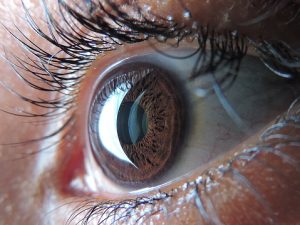
Once the retina detaches, the liquid from the vitreous gel starts accumulating behind the retina, further causing it to separate, leading to complete retinal detachment.
It is quite rare that retinal detachment occurs in both eyes, as it commonly affects one eye at a time. If retinal detachment does occur in one eye, it is imperative to constantly monitor the other eye for any signs of possible retinal detachment.
When the retina becomes detached, it can no longer receive blood and nutrients, so the longer it goes untreated the greater the risk for permanent vision loss is.
Prevalence of retinal detachment
Nearly six percent of Americans experience retinal breaks but these do not progress into retinal detachment. Annual incidence of retinal detachment in the US is approximately one in 10,000 or one in 300 over a lifetime.
Certain groups have higher incidences of retinal detachment than others. For examples, patients with myopia and aphakia are at a higher risk for retinal detachment.
Retinal detachment is also more common among older adults, typically aged 40 to 70. Younger children may experience retinal detachment due to trauma and injury to the eye.
Types of retinal detachment
There are three types of retinal detachment: Rhegmatogenous retinal detachment, tractional retinal detachment, and exudative detachment.
Rhegmatogenous retinal detachment is when there is a tear or hole in the retina. This allows fluid from the eye to leak in the retina which leads to the separation of the retina from the pigment epithelium which is responsible for providing the retina with oxygen and nutrients thus causing it to detach. This is the most common type of retinal detachment.
Tractional retinal detachment is when scar tissue on the retina’s surface contracts causing the retina to pull away from the back of the eye. Tractional retinal detachment is not as common but is most common in diabetics who have their condition poorly controlled.
Exudative detachment is caused by a retinal disease and no tears or holes are present. Diseases that can lead to exudative detachment include an inflammatory condition which leads to fluid accumulation, cancer behind the retina, of Coat’s disease which causes the abnormal development of blood vessels that lea protein behind the eye.
Detached retina causes and risk factors
A detached retina is not commonly caused by injury, but an injury could result in retinal detachment. Other possible causes for retinal detachment include a sagging vitreous and advanced diabetes.
Age can be a factor in retinal detachment too. With aging, the thinning retina becomes more prone to tears, or the changes to the vitreous gel results in fluid accumulation under the retina, pulling it away from the underlying tissues and cutting the blood supply in these areas.
Other risk factors for retinal detachment include a previous retinal detachment, a family history of retinal detachment, extreme nearsightedness, a previous eye injury, and any other eye disease or inflammation.
Detached retina symptoms
Although you won’t necessarily feel anything when your retina starts detaching, there are a few early warning signs to watch out for so you can receive treatment sooner rather than later when the risk of complications arises.
Signs and symptoms of retinal detachment include:
- Sudden appearance of floaters
- Flashes of light
- Blurred vision
- Gradually reduced peripheral vision
- Curtain-like shadow over the visual field
You should see a doctor for retinal detachment if you begin to experience any of the above symptoms. Furthermore, if you are over the age of 50, if you have had a family member with retinal detachment, and if you’re extremely nearsighted, you should see a doctor right away.
Retinal detachment diagnosis
Your doctor will perform a retinal examination and ultrasound imaging in order to properly diagnose retinal detachment. During a retinal examination, the doctor uses an instrument that produces a bright light and a special lens to examine the back of the eye. Ultrasound imaging is used to look past any bleeding that may have occurred preventing the doctor from seeing the retina.
Treatment for retinal detachment
Surgery is the main treatment when dealing with any tears, holes, or retinal detachment. For retinal tears, laser surgery or freezing are used as a means to heal the tear or hole. These types of procedures are usually done on an outpatient basis, so you can go home soon after they are done. You may have to modify your activities while recovering as per doctor’s instructions.
To treat retinal detachment, the surgeon may inject air or gas into the eye, creating a bubble that pushes the hole against the retina and stops the flow of fluid into the open space.
Another treatment is indenting the surface of the eye, which basically involves sewing a silicone patch to the white of the eye, indenting the wall of the eye in order to relieve pressure.
Lastly, the doctor can drain the excess fluid from the eye and instead inject either gas, air, or silicone into the vitreous space to help flatten the retina.
Depending on your condition, your doctor will decide which mode of treatment is best.
Preventing retinal detachment
Retinal detachment may be prevented in some cases, provided you know your risk. The best prevention method is to ensure you seek medical attention if you begin to experience symptoms as soon as possible so that your condition may be treated before it gets worse. If you are at risk of retinal detachment due to previous eye conditions or surgeries, it is best to avoid activities that include sudden acceleration or deceleration like riding roller coasters, as they can increase pressure on the eye. If you are prone to retinal detachment due to a high level of myopia, then it is best to avoid activities like contact sports where there is a risk of shock to the head or eyes.
Related: Blurred vision: Causes, symptoms, and treatment